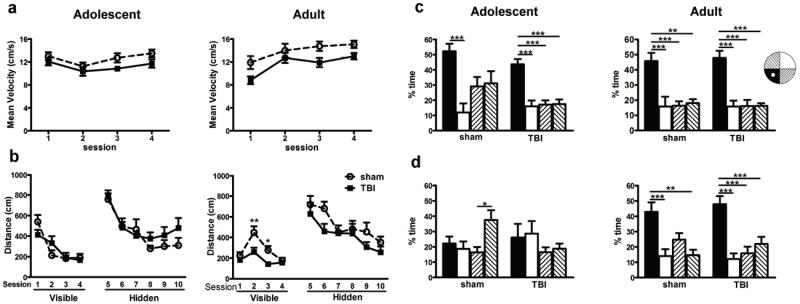Figure 8.

Spatial learning and memory were assessed in the Morris water maze after frontal TBI. The swimming speed of TBI mice at both adolescence and adulthood was reduced compared to sham animals (a; 2-way RM ANOVA, effect of injury). Despite this, brain-injured mice at adolescence were able to locate both the visible and hidden platforms similarly to sham-operated mice (b), with all mice showing learning over time. At adulthood, TBI mice showed a reduction in distance to reach the visible platform during sessions 2 and 3 compared to sham mice (2-way RM ANOVA, post-hoc *p<0.05). However, sham and TBI mice showed equivalent performance during the hidden platform sessions. Probe trials, in which the target platform is removed, were quantified as time spent in the target (black bar), opposite (white bar) or adjacent quadrants (striped bar) were compared within each group (1-way ANOVA). Probe trials 1 and 2 are shown in Suppl. Fig. 2. In probe trial 3 (c), all groups independent of injury or age showed memory retention by a preference for the target quadrant. Probe trial 4 was performed one week following probe trial 3 (d). Regardless of injury, adolescent mice do not show a preference for the target quadrant, indicating a lack of long-term spatial memory. In the adult cohort, both sham and TBI mice show long-term memory retention, with a strong preference for the target quadrant (post-hoc; *p<0.05, **p<0.01, ***p<0.0001; n=10/group).
